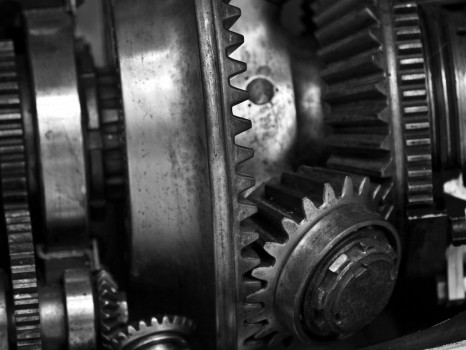By Mike Carmody*
In April 2013, the South Australian Premier Jay Weatherill and Victorian Premier Denis Napthine demanded state and federal passenger car fleets include more Australian-made vehicles.
Their call came after Holden announced it is slashing its workforce.
Anyone concerned about the state of Australia’s car industry will welcome the Premiers’ call to action. Moves to “Australianise” government fleets are long overdue including the requirement to make LPG Autogas vehicles part of government vehicle buying plans.
In recent times Gas Energy Australia has been pointing out more LPG vehicles in government service would lead to significant savings for Federal and State budgets and better outcomes for the environment.
Right now the use of these LPG vehicles varies between governments. The South Australian and Victorian Government fleets have the most LPG vehicles while the Commonwealth, Queensland, Tasmanian and the Northern Territory Governments have the smallest percentage of Autogas powered vehicles.
In the past government fleet managers may have been constrained by the lack of Australian made LPG vehicles. Now there is no such excuse. Holden and Ford both make LPG models with locally designed, world class Autogas injection technologies.
These match and often surpass the power and drivability of petrol systems and extend maintenance schedules. And if fleet managers must buy other than home-grown models, Australia’s LPG vehicle conversion industry has enough capacity to install new technologies in most models on the market including light commercial vehicles.
The taxpayer would be the real winner if more Autogas powered vehicles found their way in more government garages. On average Autogas is around 50 per cent cheaper than petrol. That means if the Commonwealth Government converted its petrol powered 6 and 8 cylinder passenger and light commercial vehicles to Autogas, its fuel bills would drop by around $7.3M in a full year. And there would be environmental benefits.
Many Australian governments have committed to cutting Greenhouse Gas (GHG) emissions. So far reductions have mainly come by buying smaller vehicles. For example since 2006 the NSW Government passenger and sports utility vehicle (SUV) fleet has gone from about 75 per cent large vehicles to 76 per cent light, small and medium vehicles. Over 75 per cent of the entire NSW fleet of passenger/SUV and light commercial vehicles is now 4 cylinder.
This practice of swapping larger vehicles for smaller ones has come about without little strategic thought on how alternative fuels such as Autogas could achieve government environmental targets.
LPG powered vehicles emit significantly less GHG emissions than equivalent petrol powered vehicles. For example a Ford Falcon XT EcoLPi, with advanced LPG injection technology, produces 16 per cent less grams of carbon dioxide equivalent per kilometre travelled (199 gm CO2-e/km) than its petrol equivalent (236 gm CO2-e/km).
More LPG vehicles in government fleets would also help to improve Australia’s energy security. A recent NRMA report on Australia’s liquid fuel security shows Australian stockholdings of liquid fuels are roughly equivalent to 23 days of consumption.
If overseas oil supplies were interrupted as they were during the 1978–1982 oil crisis, government fleets will be severely affected. Yet Governments are silent on how much their (and other) fleets depend on imported fuels and just how vulnerable they are to major disruptions.
This dependency strongly contrasts with the reality of our LPG supply situation. LPG is Australia’s indigenous domestic fuel and there are enough reserves to supply government, industry and community needs literally for generations. Plus a first-class distribution system is already in place across Australia with over 3,700 Autogas refuelling outlets nationwide.
So if manufacturing, supply and distribution are not barriers to buying LPG vehicles for government service, perhaps taxpayers should ask tough questions about fleet policies?
• If Australia has a capable and domestic vehicle manufacturing and an LPG conversion industry why do governments overlook home-grown products when buying for their fleets?
• If Autogas is almost 50 per cent cheaper than the petrol, why aren’t more government cars run on Autogas?
• If Autogas is cleaner than petrol and diesel, why do policy makers neglect it when developing environmental initiatives for government transport?
It is time for a government rethink on how we go about safeguarding our domestic car manufacturing industry and ensuring better environmental outcomes on our roads.
Gas Energy Australia is calling on the Prime Minister and the Premiers to show leadership and use a new Australian manufactured LPG vehicle as their official cars. This would send a simple yet powerful message to Australia’s car manufacturers and the national Autogas industry.
*Mike Carmody is the CEO of Gas Energy Australia, the peak body representing Australia’s $1 billion gaseous fuels industry.
Comment below to have your say on this story.
If you have a news story or tip-off, get in touch at editorial@governmentnews.com.au.
Sign up to the Government News newsletter


Two additional points:
a. several car makers already have LPG models overseas, and choos not use thsi technology in Australia.
b. An Eco Falcon costs less to run than a petrol 4 – cylinder car, so surely a 4 cylinder car would appeal to many people!
Good message Michael and well stated.
Mike Cochran
Ecco Consulting Pty Ltd